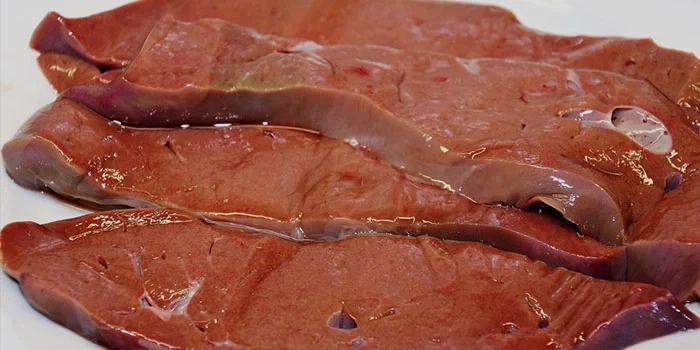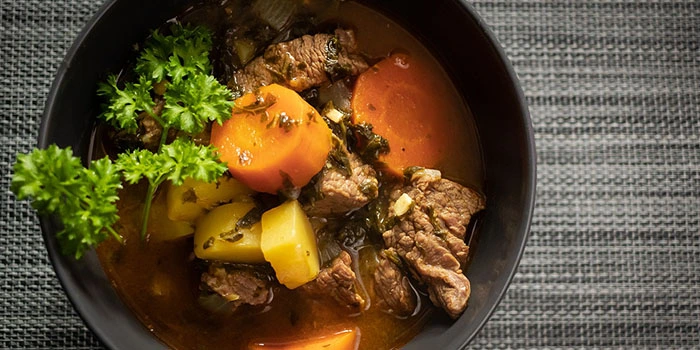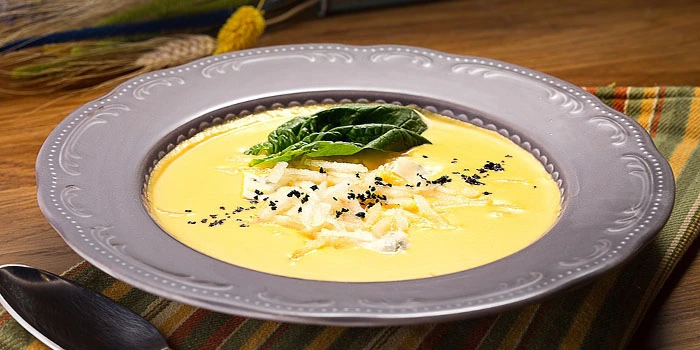Introduction
Buying liver from the grocery store can be tough. You might be confused between beef liver or calf liver. Moreover, which one should you buy anyway?
There’s so much about the two kinds of liver we don’t know. But now you’ll know.
What is the difference between the two kinds: beef liver vs calf liver?
Well, the beef liver comes from grown-up or old cows. Whereas calf liver comes from the young cows. Beef liver and calf liver differ in terms of cost and availability. Moreover, you can compare the two on the basis of their taste, texture, nutrients, and how they affect environmental sustainability.
That’s not all. We’ve provided you with a well crafted, detailed difference further in our article.
Beef Liver or Calf Liver- Why does it matter?
Does it really matter which liver you’re consuming? Whether it’s beef or calf? It could be any of the two and you might not even realize which one you’re having.
Well, guess what? It does make a difference. Even though beef liver and calf liver come from the same animal, there’s so much variation as the cow grows up.
Have you ever thought of how the cow grows and how it affects the liver? There’s so much to evaluate when consuming liver. No matter beef or calf, there are a lot of factors that need to be considered.
Starting from the cost and availability to the health benefits. And further to the spiritual considerations, you need to put everything out there.
If you’ve never thought about these factors before, maybe you should start now. You’ll find a lot of things to consider.
Beef liver vs calf liver- A Quick Comparison
So what are actually the differences between beef liver and calf liver? You’d be surprised to know how much the age of a cow affects its liver. For your convenience, we’ve dropped a quick comparison between the two below.
| Factors | Beef Liver | Calf Liver |
| Availability | Widely available | Not as widely available |
| Cost | Expensive | More expensive |
| Taste | Flavorful | Sweet and flavorful. |
| Texture | Can be mushy if too old | Tender and soft |
| Nutrients | Contains many nutrients and more toxins | Contains more nutrients and fewer toxins |
| Side effects | Stone formation in kidney, Gout | Stone formation in kidney, Gout, Cardiovascular diseases |
Cost & Availability
The liver is generally an expensive food whether you buy it from the nearest super shop or eat at a restaurant. Compared to other organs, the liver has a different texture and is said to be a delicacy. This is why its demand is so high and it’s so expensive.
Now, this is where the two livers are different.
Beef liver is expensive yet widely available in the market; whether it’s the farmer’s market or a super shop. You’ll find it anywhere and in an adequate amount. The demand is definitely high but the supply of beef liver meets up to the demand.
But in the case of calf liver, the cost is generally higher than that of beef liver. You may be wondering why?
Well if you already don’t know, calf liver comes from young cows that age about 16 to 18 weeks. There are not enough young cattle available. So you don’t get adequate amounts of these in the market.
Moreover, there’s a concern of ethical issues here because consuming calf liver might be illegal in many places which we’ll discuss later. As a result, typical stores may not supply calf liver, or even if they do, it’ll be more expensive than beef liver.
Cooking concerns
Preparing liver for cooking doesn’t create much of a fuss. Moreover, cooking any kind of liver is quite the same. Whether it’s beef liver or calf liver, the process of preparing it and cooking is pretty much the same.

Here’s the thing-
There isn’t any specific way that you need to follow to cook beef liver or calf liver. However, make sure to cook the liver at a minimum internal temperature of 160 degrees Fahrenheit.
If you cook the beef liver in too much heat and for too long, it’ll become leathery and will taste bitter. So make sure to cook it in low heat for about 15 minutes or so.
In the case of calf liver, it takes less than 15 minutes to cook because the liver is already quite tender and soft. But this also means the calf liver can become tough quickly unlike beef liver.
However, if you cook the liver perfectly, the inside remains pink. But the outside is brown and that’s the beauty of a well-cooked liver. So make sure to cook it less because you can’t fix it, unlike fixing tough corned beef.
Taste & texture
When it comes to food, the taste and texture is the most important factor to be considered. The taste and texture of liver, whether it’s beef, calf, or lamb, is quite different from meat.

While the liver’s texture before cooking may be slippery. But when cooked right, the texture of a liver is extremely smooth and cuts just like butter. Moreover, it tastes pretty good and rich.
In the case of a beef liver, the older cows tend to have a liver with a mushy texture. And often when cooked, the texture becomes leathery and tastes a little bitter. However, if the beef liver ends up good, it’ll be rich and soft.
But there’s a catch-
Beef liver generally has a strong flavor that many people do not like. Moreover, it may have a thick meaty, and mushy texture. It’s not quite tender unless you get lucky with your pick.
However, in the case of calf liver, the texture is quite different from beef. It’s tender and soft on the inside. When cooked, it brings a sweet flavor.
Furthermore, the calf liver tastes clean and feels smooth when you bite on it. The calf liver is often considered a delicacy because of how tender and sweet it can be.
So flavorwise, calf liver takes the prize.
Health Benefits & Issues
Livers have a good amount of health benefits because of all the nutrients they contain. But they come along with a few side effects if consumed without limitation. Having control over your food intake is quite necessary.
So you must know all the health benefits, nutrients, and side effects of the liver before consuming it. Moreover, you must know the right amount of liver to be consumed every day to get just the right amount of nutrients.
Nutrients
The liver is an organ that is full of nutrients. And having this in your daily diet does make a lot of difference in your health. The liver contains adequate vitamins and minerals that are quite essential for the human body.
Alongside vitamin A, B6, B12, and C, beef liver contains minerals such as iron, copper, zinc, folic acid, and chromium. These are extremely useful for a healthy heart and for maintaining the right hemoglobin level in your blood. And the vitamin A present in it is really great for eyesight and anemia.
But you must consume a limited amount of beef liver. The ideal amount of beef liver intake is once per week.
To be more specific, You must not take liver every day because it contains 165 calories and has 20 grams of protein in 100 grams of the liver. So consuming too much would cause other diseases.
The calf liver on the other hand contains more nutrients than beef liver. It’s full of vitamin B12, B6, A, C, and vitamin PP. Moreover, the calf liver has lower toxins in the body and i’s clean. This is because the liver didn’t get enough wastes to purify which could affect the inside. These vitamins help prevent heart diseases and keep you healthy.
The calf liver has about 193 calories and 27 grams of protein in 100 grams of liver. So you can understand that it contains more calories compared to that in beef liver. Hence, it is important to intake calf liver in limitation.
Short term health effects
There aren’t any short-term health effects or side effects of taking liver. The liver doesn’t cause acidity or stomach pain.
However, consuming too much liver in one sitting whether it’s from beef or calf can cause stomach pain. This can in turn lead to further severe health issues. So it is recommended to consume limited portions of beef or calf liver.
Long term health effects
As the liver is lean meat, it’s extremely high in cholesterol. Beef liver contains about 355 mg of cholesterol per 100 grams. Whereas calf liver contains 485 mg of cholesterol because of its purity.
Too much cholesterol can increase the risk of cardiovascular diseases. So you must control the intake of the liver in your diet. Moreover, if you’re a person with existing cardiovascular diseases or issues, try to eat a very little amount of calf liver or beef liver.
The same goes for having too much vitamin A in your diet. As calf liver contains more of the vitamins, it causes long term toxicity in the body. Fat-soluble vitamins like vitamin A do not dissolve in the body rather remain stored. So a high dose of the vitamin will create toxicity.
Thus consuming too much liver at the end of the day causes health issues such as the formation of stone in the kidney, excess uric acid build-up, and gout.
Sustainability
Cows generally release methane when they digest food. This methane is a greenhouse gas that is more potent than carbon dioxide and can really harm the environment.
The older cows have been emitting methane throughout their existence. Whereas the younger ones also known as veals release less methane because of having less fewer toxins in their body. There are about 4 billion cattle in the world today and altogether they release about 65 % of greenhouse gases like methane.
The older cows are therefore releasing more methane and affecting the environmental sustainability compared to the younger ones that are being slaughtered.
This is also somehow related to the beef and calf liver. The calf liver helps balance out the environmental sustainability which the beef liver fails to do.
Spiritual Considerations- Is It Really Right?
Lastly, if you’ve not given a thought to this fact already, let’s get on to it. From a spiritual perspective, how much does it bother you to consume young cows and their organs? Have you ever thought about how the calf liver is coming to you?
Even though they taste pretty amazing with tons of nutrients that benefit your health. At the end of the day, these livers came from little calves about the age of 16 to 18 weeks. If you think of it, you’ll start to question whether it’s actually morally correct to slaughter little baby cows. And then consume their meat and their other organs.
These young cows could one day become old but we’re consuming these, without even a second thought.
This is the reason why in many countries, selling calf meat and liver is considered illegal or unethical. Selling beef liver isn’t illegal and eating them doesn’t question your morality or ethical virtues.
So think before you consume calf meat and liver is it really ethically correct to do so?

FAQs
The liver turns green in color because of bile leaching out from the gallbladder into the liver. However, eating green liver isn’t harmful.
No it is not necessary to soak the liver before cooking. But some people like to soak it in milk or water for up to three hours. This helps to dilute the strong flavor of the liver.
The liver is a great source of high-quality protein and it can help you build muscles and increase your metabolism. But it doesn’t really take part in the weight loss process directly.
Verdict: Really which one should you choose?
Even though both livers are equally good for you, consider everything while you decide.
Before you pick, keep in mind that the calf liver provides over 100% of the RDI of nutrients in your body. So, whatever you consume, make sure to have it under limited proportions.
We hope our discussion on beef liver vs calf liver cleared all your doubts. Let us know if it helped.





